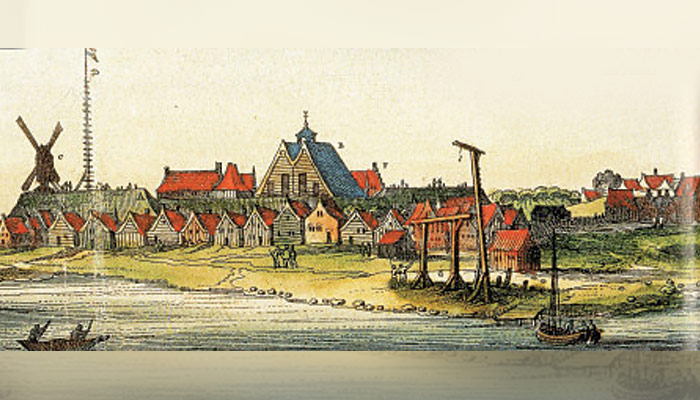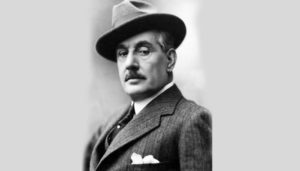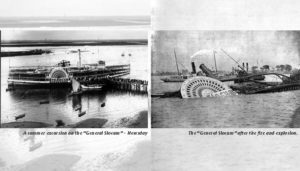In a world of cosmic challenges, I find it relaxing on occasion to turn my attention to personal matters of no consequence in the larger scheme of things. Shoelaces, for example.
A woman stops me on a New York City street to point out that a shoelace of mine has become undone. Though the beneficiary of 19 years of the finest education available in the United States, I never learned the proper way to tie my shoelaces. Perhaps I was absent from school the day this was taught. Or shoelace-tying may not have been part of the school curriculum and the failure to teach me lay at home. In any event, following the woman’s helpful comment — for you can trip on a shoelace trailing along the sidewalk, or even fall flat on your face– I lean against the wall of an apartment building and, standing on one leg, crane-like, tie the lace the only way I know how : two slipknots. When close to home, I don’t bother. Why expend the energy. Upon arriving at home, off come the shoes.
Once a lace got caught in the chain of my bicycle. The result, a shredded shoelace. Fortunately, I avoided injury by not falling off the bicycle. I learn by consulting the Random House website that the plastic or metal tip of a shoelace is called an aglet. It protects the feazings, the unraveled part of the lace.
The composer Richard Wilson also has trouble with his shoelaces. He alerted me to a story about the composer and conductor, Gustav Mahler, found in a biography by Henry Louis de la Grange: “His shoelaces kept coming undone, and Alma (the future Mrs. Mahler) was touched by the childish awkwardness with which he invariably chose the highest and most uncomfortable place on which to rest his feet while he did them up again.”
I consult the owner of a local shoe repair shop on Second Avenue near 71st Street. Once a dairy farmer in Wisconsin, at age 32 he started repairing shoes and has been doing so for a quarter century. He tells me he sells lots of laces, but does not offer to serve as my lace-tying instructor.
Given my interest in shoelaces, I spend time looking at people’s footwear. The best place to do this is on the subway. My research reveals that very few people have any difficulty keeping their shoelaces tied. I am embarrassed to see children on the way to school, all with perfectly tied laces. Why, you may ask, don’t I cut this Gordian knot — yet another knot in my life — and ask a school child to teach me to tie my laces in the correct way. Dear Reader, at my age, it is never easy to abandon the practice of a lifetime. And not easy for me to ask a little one for instruction. I do have some pride.
Thinking of shoe laces brings to mind my ancient shoe polish box. Once a month, on a Sunday night, I polish my black dress shoes. I place a newspaper on the kitchen counter and go to a closet in the bedroom. On the shelf is a battered wooden shoe box – my own creation! – the only object I have ever made with my own hands. I did so in carpentry class at elementary school. The shop teacher helped me. Using a pencil and ruler, with a firm hand he drew straight lines on a wooden board. I was to follow the lines with a saw. I tried my best, but could not follow his lines. I nailed the misshapen pieces together, but none were aligned. Two hinges were used to attach the cover. I painted the box blue, my favorite color. The teacher realized that whatever the future might hold for me, it was not going to be a career in the manual arts.
To this day, my box contains black polish, a brush for applying the polish, and a hand brush and cloth for shining. Someday I will learn how to polish shoes without blackening my fingers, and perhaps also learn how to write with a pen without leaving black ink stains on my shirts. I consider the latter a writer’s badge of honor. The laundry man differs.
Years after this introduction to carpentry, when I was serving as a counselor at a boys’ camp in Maine, the camp director selected me to run the carpentry shop. His choice was nonsensical, but things worked out well since I had a talented assistant. He worked with the boys on their projects while I assumed responsibility for preventing fingers from being mashed by hammers or the accidental sawing off of a limb. Though not an aesthetic success, my shoe box has served me well for 67 years. It is one of my few possessions remaining from childhood.
Turning now to another matter of no consequence, my wardrobe, I wear khaki pants and a dress shirt. I haven’t owned a sports jacket for years, preferring to wear suit jackets. I used to think huge, hungry moths inhabited my closet, for the jacket linings have large holes, but the villain is friction; the contents of my jacket pockets rubbing against the lining.
The ties I wear reflect deep personal attachments. A blue tie with the New York City seal bearing the date 1625, the year the Dutch West India Company established New Amsterdam at the southern tip of Manhattan Island, and a crimson tie with the Winged Lion of St. Mark, a paw resting on the page of an open book. This literate lion is the symbol of Venice. (“And wherever I go, I carry the name of Venice sculpted in my heart; I have always remembered Venice; I have always sought to return.” Carlo Goldoni, playwright.) I wear these ties for weeks at a time. In the rush of dressing in the morning, it is easier to reach for a favorite tie, rather than spend time choosing from an assortment.
I save for last the piece de resistance of my wardrobe: an elegant felt hat. I dare not have the hat cleaned. In the 1940s, men all wore hats. In photographs from this period of lunch-time crowds on Fifth Avenue, there is not an uncovered head.
No longer. Gone are most hat stores, and with them, experienced hat cleaners. Now when I have a hat cleaned, it may come back shrunken, while my head remains the same size.
Over the years, I have worked for several non-profit organizations. When I visit a foundation, I am on a mission to raise funds. I appear as a supplicant, hatless, in my khaki/suit jacket outfit. The last thing I want is to look prosperous. But for meetings at law firms, I arrive in my felt hat, blue suit and black shoes. Here, the last thing I want is to look impecunious.
On weekends in Central Park, I wear a Boston Red Sox baseball cap. This makes no sense since I am a New Yorker to the marrow. But wearing a Yankee cap in New York is pretty boring, since New Yorkers are expected to do so. Wearing a Boston cap generates lively verbal exchanges on the street. As a lawyer and contrarian, I enjoy verbal jousts with Yankee fans, reminding them that Boston is truly a part of the United States. To do so now is especially pleasurable, with Boston as this year’s American League champion playing in the 2018 World Series.
Enough of inconsequential personal matters. It is time now to return to affairs of our anxious, overwrought world.
























